Achtung! New cameras on the road or up-to-date information on radars and radar detectors
Recently, more and more radars of various categories and modifications have appeared on the roads. Especially for motorists in this post we talk about which radars are in favor today, as well as which radar detectors allow them to be detected in a timely manner. Under the cut - all the details.
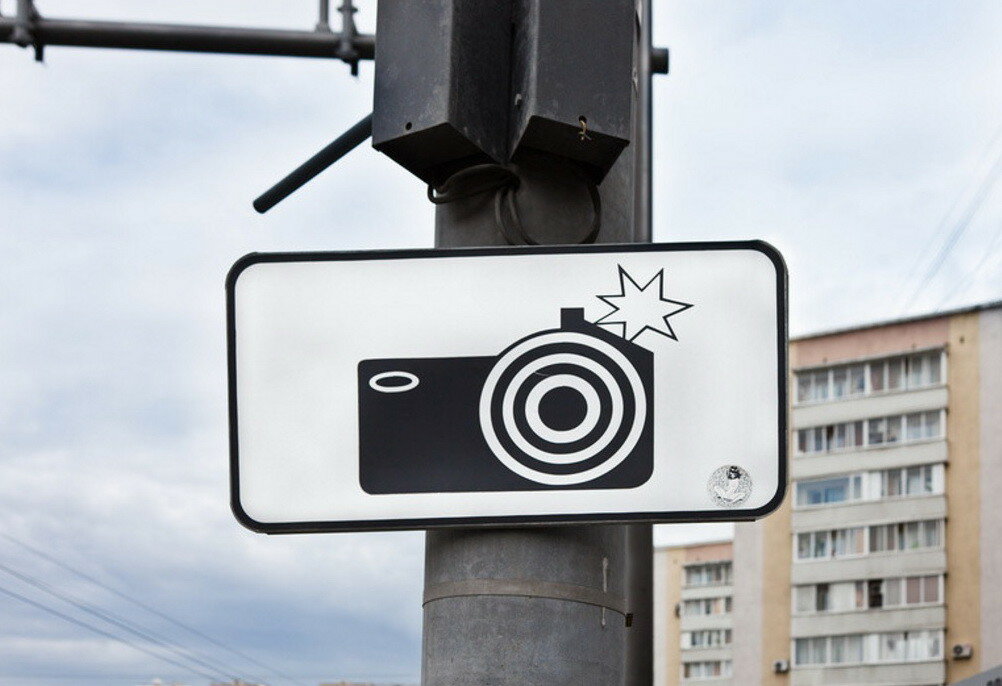
Since radar detectors are allowed in Russia, at the time of preparing the post on Yandex.Market almost 500 different models are available! Choosing from such a variety of devices that actually do the same thing can be difficult. Therefore, today we are discussing the criteria for a “good” radar detector.

If in the 1990s traffic cops (yes, they weren’t the traffic police then) were on duty with the only Barrier-2M radar, which was detected by any device for more than a kilometer, although it itself could record the intruder for a maximum of 300 meters. The current set of police radars is like an assortment of a supermarket against the backdrop of a supermarket from the time of the USSR.
Radars used in Russia operate in the K-band or measure speed with a laser. The X, Ka, and Ku ranges are no longer used, although the devices on the market support them. Therefore, you should not take them into account, and it is even good if the radar detector allows you to disable them in the settings.
At the same time, most motorists agree that the most significant event in the world of Russian police radars was the appearance of the new Strelka radar in the early 2010s. Stationary cameras with a long range began to appear on the roads, although for the most part radar detectors did not see them (and do not see them). “Arrow” is the first short-pulse K-band camera in Russia. Its difference from models with constant radiation is in a series of short and low-power “shots”. If the old meters spent about a second fixing speed, Strelka only needed 0.3 seconds. Gadgets that existed ten years ago sometimes did not even perceive such a “background” for false interference and were silent with a clear electronic conscience.
The way out of the situation was found quite quickly. Manufacturers began to integrate GPS modules and a small amount of memory into the devices. It loads the base of coordinates of police radars, which are in known places. In addition, the built-in base allows you to implement a warning about cameras in the direction of movement. For example, the Strelka operating in the oncoming lane will cause the radar detector to wake up, but it does not pose a threat to you, so the GPS warning will not sound. This approach brought the information content of devices to a new level.
However, not everyone was satisfied with the "passive" recognition of the new radar by coordinates and took up the modernization of devices. At first, an additional microcircuit was integrated into the board to identify Strelka. Now top-end radar detectors support the detection of “arrows” at the level of basic functionality.

Two other radar brands popular in Russia are Chris and Cordon. The first is most often used in the mobile version, although stationary versions are also rare. Due to the nature of the installation in Russia, “Chris” (and after them the other portable cameras) were called “tripods”. It is under the "Chris" for some reason they like to mask active camera models on poles. “Active” means that the K-band emitter is hidden inside the case. Radar detectors react to it, forcing drivers to slow down, although in reality no control is carried out.

"Cordons", on the contrary, can often be seen over the road. This, however, does not preclude installation on the side of the road next to the machine.

Newcomers to Russian roads are Oskon and Skat radars, which also operate in the K-band. Their mass distribution in the suburbs began about a year and a half ago. At first, they could be seen only "complete" with a Ford Transit van of a characteristic color, in addition indicated on the side of the road with bright cones. They are even “quieter” than the “Arrows”, so their recognition range under identical conditions can be two to three times less. But still: decent models provide enough distance to have time to slow down.

Now Oscon is gradually disappearing, apparently recognized as unpromising. But the "Rays" breed actively. In addition to mobile complexes, there are already enough hung up on poles, mainly in settlements along the highways, where the speed limit is 40-60 km / h.
Laser speed meters, the so-called lidars, from the moment of their appearance in Russia almost 20 years ago to this day remain exotic. You can meet them on the roads in certain regions, and even there they are by no means the basis of the radar “park”. There are few models in this category - LISD, Amata, Poliskan, TruCam. In fact, they are laser rangefinders (LISD - Laser Speed and Range Meter)
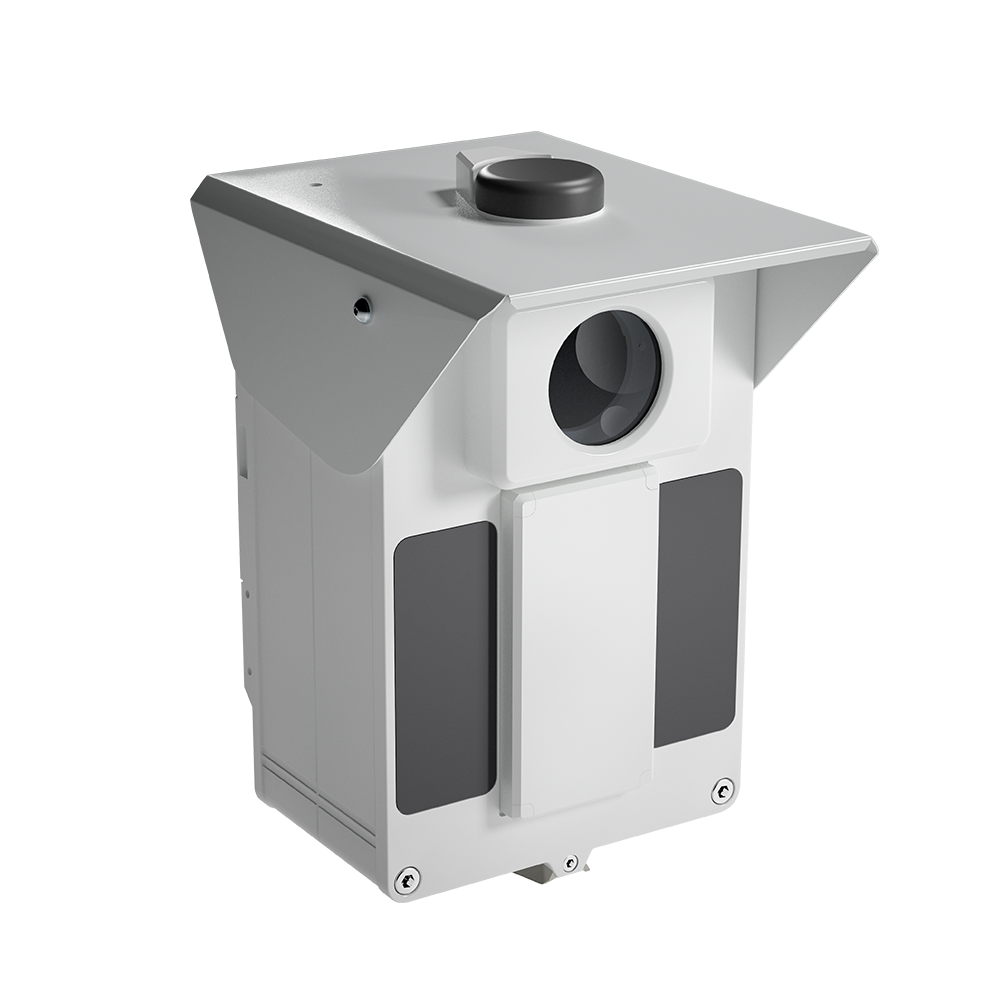
The difficulty in detecting laser opponents is that a very narrow beam emerges from them. Its divergence at a distance is less than that of K-band radars by an order of magnitude, or even more. Because of this, it is much more difficult for gadgets to detect lidar. And if the traffic inspector shows ingenuity by aiming the device, then the chances of avoiding a fine tend to zero at all. For example, you can direct the beam to the area of the front bumper. Then the detector installed in the cabin is much higher likely to remain silent.
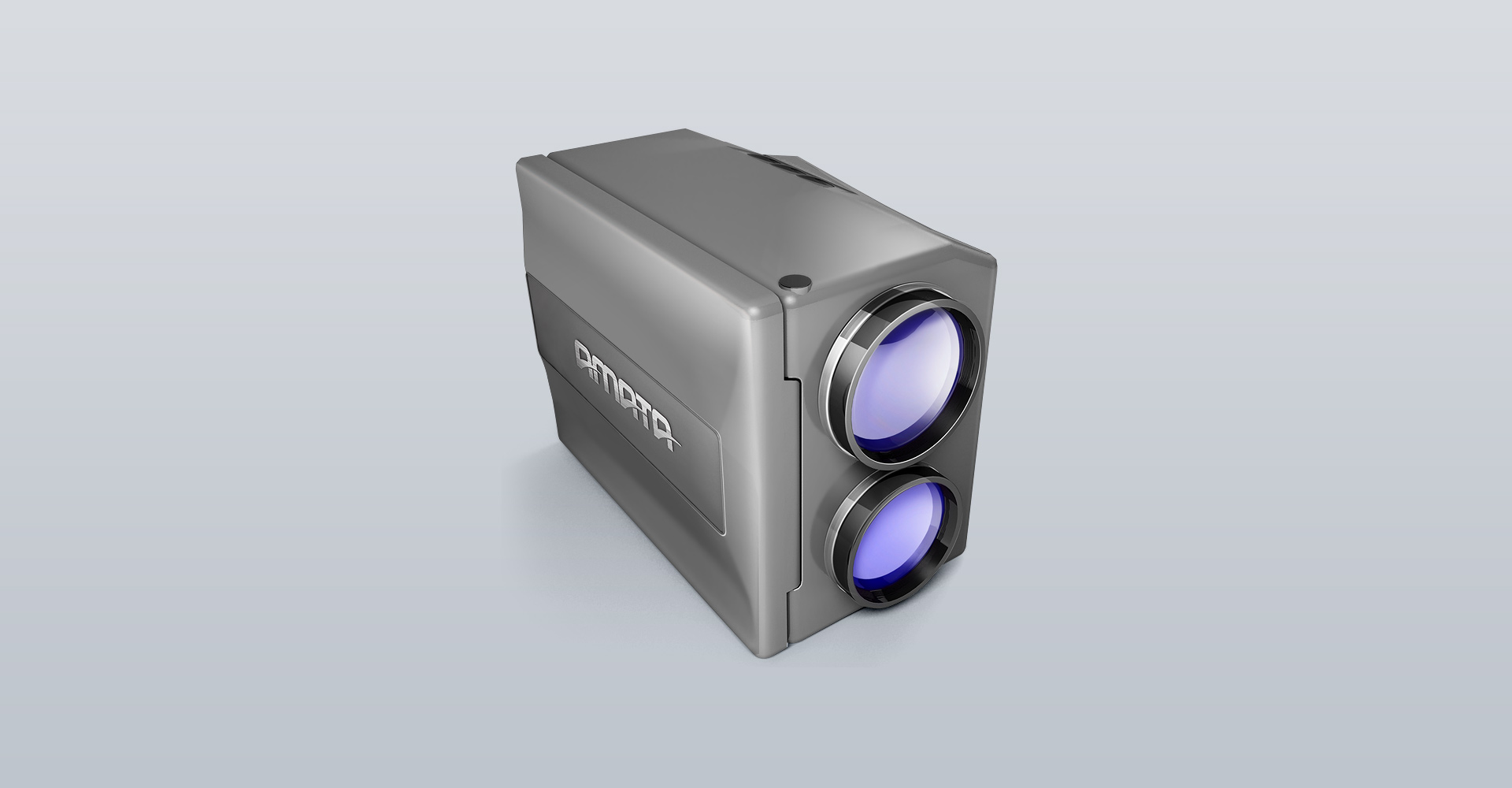
Nevertheless, the ability to recognize lidar is a valuable quality, indicating a high level of radar detector. By the way, there are quite expensive models on the market that ignore laser measurements with enviable tenacity
There are also complexes on the roads against which classic radar detectors are powerless. The point here is not a lack of abilities or design flaws - just the profile is absolutely not theirs. The gadgets we are considering catch radiation, but it is precisely the most interesting enemies of the scorcher who do not have it. Absolutely.
Modern road cameras have been taught to work without radar units. They determine the speed and, accordingly, the fact of violation by photographs. The principle of operation is at the level of the simplest school mathematics. The system takes two pictures of the same car. The distance between the fixation points is known, the time taken to overcome it, too. A primitive formula calculates the speed of movement. If it exceeds the permissible, a "letter of happiness" is formed. The GPS base of the coordinates of the radar detector is responsible for warnings about such complexes.

Photos can be taken by one camera at different boundaries of removal, or maybe two, the distance between which sometimes reaches tens of kilometers. According to the first principle, the Avtouragan complex operates, becoming the main one on the roads of Moscow and Moscow Region along with Strelka. The second approach is typical for Avtodoriya and Boomerang. The latter sends fines on the M-1 "Belarus" highway, controlling sections of more than 60 km in length.
It is important to remember: while the complexes operating at an average speed are relatively rare, most of them are “Avtodoriya” and “Boomerangs”. However, you can configure any pair of radars to detect this violation. Including the long-known "Arrows". So do not be surprised if, after braking in front of both cameras, you still get a “letter of happiness”. Moreover, control zones may intersect, that is, not obvious to drivers.
Strictly speaking, complexes for measuring average speed are not entirely legal. The Code of Administrative Offenses provides only a fine for exceeding the actual speed. However, this legislative conflict does not bother anyone. Despite repeated attempts, contesting punishments from Avtodoriy and Boomerang was unsuccessful.
One of the latest innovations of the “penalty” market is the Street Falcon complex. Many metropolitan motorists are already familiar with him, and there is such a forced acquaintance a lot, 3000-5000 rubles. A camera similar to a lantern is hung on a pole and controls the stopping and parking of vehicles. I did not pay for parking within five minutes, wait for a letter with a resolution of 5,000 rubles (a new penalty for non-payment in the capital from the beginning of this year). With a stop in the restricted area is still stricter. Fine in your pocket if you stand under the lens for more than ten seconds! By a similar principle, the Dozor-K and Sova complexes operate in the regions.

The first "Street Falcons" appeared in Moscow last fall. Now they are actively hanging, and they even reached the outskirts and not the busiest streets. So, a passenger landing harmless for traffic safety and non-criminal in terms of traffic jams can cost the driver an impressive 3,000 rubles. A couple of timely warnings, and, consider, already beat off the cost of a radar detector! Therefore, it is extremely important for the device that Street Falcons are contained in the built-in camera base. Playme was one of the first on the market to introduce information about them in its firmware.
And on the capital's roads until the end of the year 200 complexes "Fast and the Furious." Their aim is at unregulated pedestrian crossings and, accordingly, fines for not providing benefits to people crossing the road. A separate warning will be required about them, because the nature of the cameras for drivers is still non-standard.
Detection accuracy
False alarms throughout modern history remained the main problem of radar detectors. The abundance of automatic doors and sensors of active safety systems on cars has led to the fact that gadgets have too many irritants. Riding with the simplest models of radar detectors, within the boundaries of megacities, has become associated with continuous “wheezing” of the device, and unjustified alerts began to appear on busy roads. As a result, driver confidence began to decline.
Nevertheless, the advent of signature technology, which was first massively used in 2016 in Playme models, helped to rectify the situation. The fact is that each speed meter has its own characteristic type of radiation, and apart from the frequency, they are distinguished by other characteristics of the radio signal. Using signatures, developers lay in the memory of the radar detector. The device checks the detected signal with the signature database and shows the driver not only a warning about the signal strength, but also the name of the specific radar in front. By the way, we at Playme additionally put false interference signatures in the devices so that the radar detectors do not respond to them.

So, a good radar detector should:
Working moments
A lot of controversy is going on around sophisticated windshields - with integrated heating, as well as with athermal coatings. The forums often say that they significantly degrade the quality of the radar detector installed in the cabin. We specifically checked this issue and made sure that problems are indeed encountered in individual car models with athermal "visor", but they also have a structurally "transparent" zone. It was made, of course, not for a radar detector, but for a toll road transponder. But you can also aim the device through it.
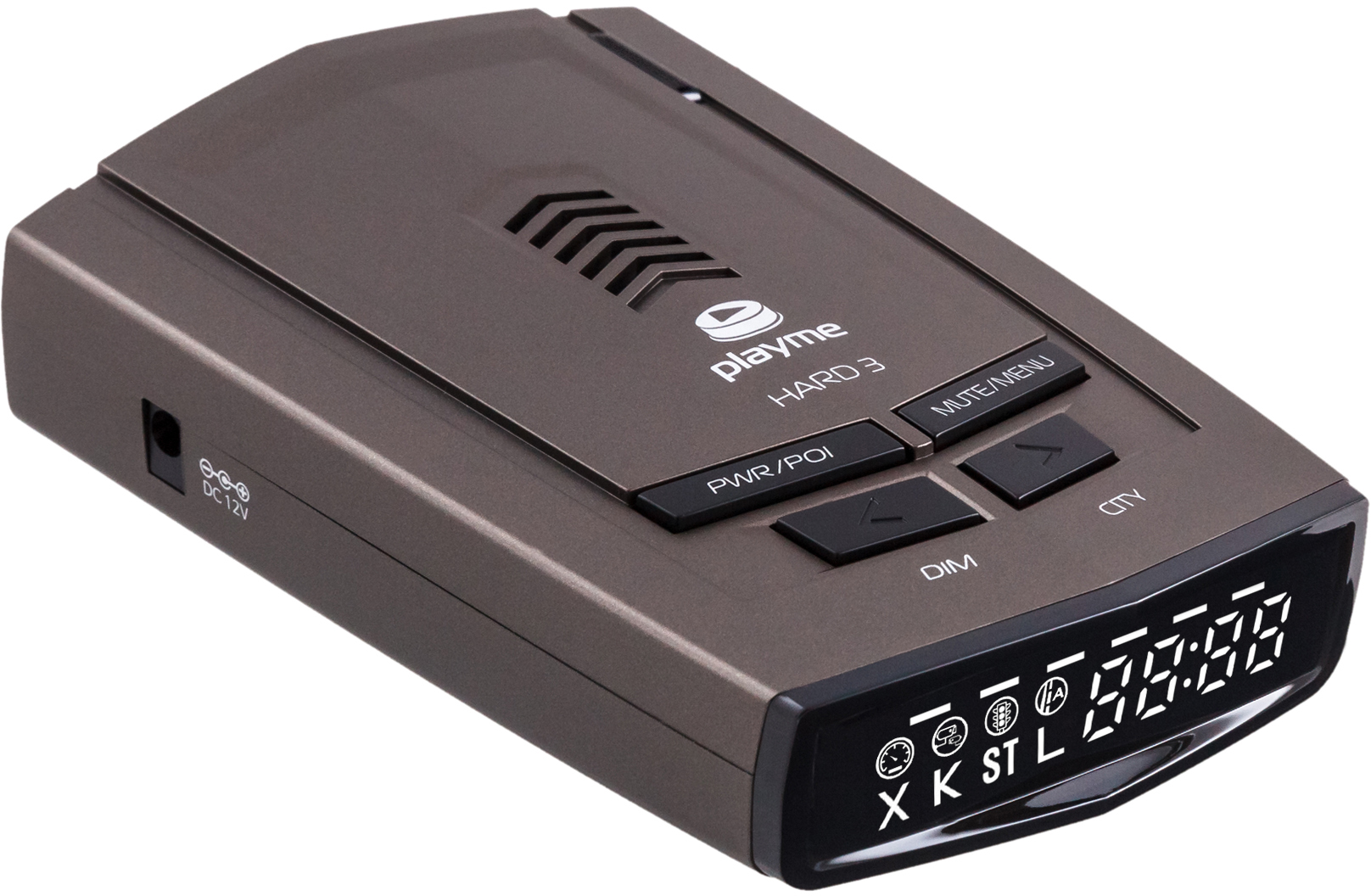
Also, choosing a radar detector, you need to determine the type of display. Many models use segmented screens. Other radar detectors are equipped with OLED screens
Fans of more informative displays should pay attention to the Playme Silent 2 radar detector. In it, instead of the single-line horizontal monitor used on the vast majority of detectors, a multi-line square monitor is used. At least it looks unusual.

A simple check by Yandex.Market showed that out of almost 500 models available for sale, only 355 are ready to speak against Strelka, and only 191 have an integrated base of coordinates.
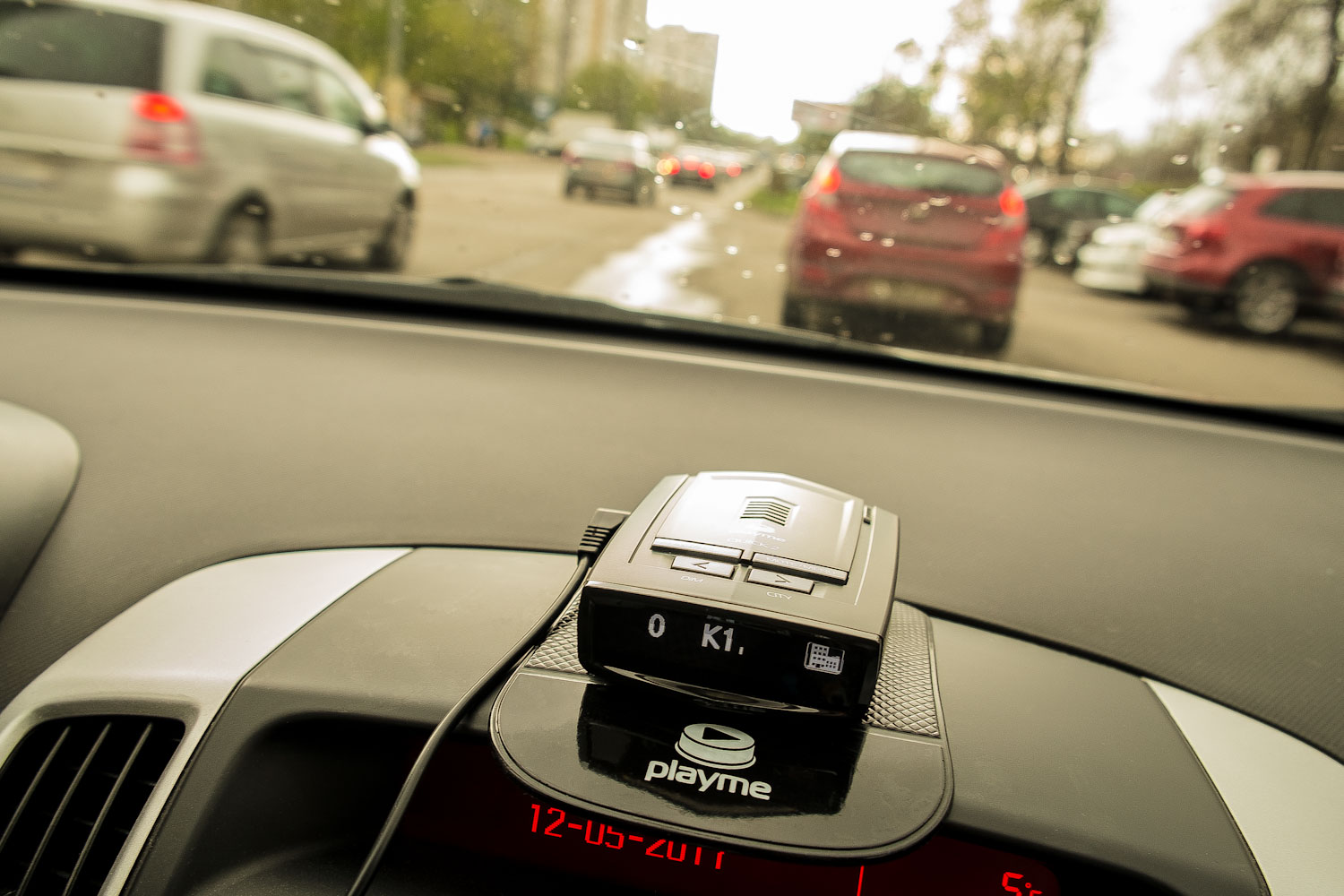
It is also worth paying attention to the possibility of setting speed thresholds for automatic change of city and highway modes and setting the margin of permissible excess. The latter is especially true in Russia, where +20 km / h is not considered. By the way, this feature is not available in all radar detectors.
Finally, one of the most important factors is updating the firmware. Here, the timely modification of the GPS base and detection algorithms, as well as the update method, play a role. For example, those radar detectors that allow updating the base without removing the device from the dashboard using wireless communication will be much more convenient.
With regard to accuracy and refresh rate, not all manufacturers act the same. For example, Playme engineers leave for analysis and refinement immediately after the appearance of the new police radar model directly “into the fields”, remove the radiation signature in order to release a firmware update in a couple of weeks. Therefore, we recommend that you check how often new firmware is published on the manufacturer's website before buying a radar detector.

Since radar detectors are allowed in Russia, at the time of preparing the post on Yandex.Market almost 500 different models are available! Choosing from such a variety of devices that actually do the same thing can be difficult. Therefore, today we are discussing the criteria for a “good” radar detector.
Russian radars

If in the 1990s traffic cops (yes, they weren’t the traffic police then) were on duty with the only Barrier-2M radar, which was detected by any device for more than a kilometer, although it itself could record the intruder for a maximum of 300 meters. The current set of police radars is like an assortment of a supermarket against the backdrop of a supermarket from the time of the USSR.
Radars used in Russia operate in the K-band or measure speed with a laser. The X, Ka, and Ku ranges are no longer used, although the devices on the market support them. Therefore, you should not take them into account, and it is even good if the radar detector allows you to disable them in the settings.
At the same time, most motorists agree that the most significant event in the world of Russian police radars was the appearance of the new Strelka radar in the early 2010s. Stationary cameras with a long range began to appear on the roads, although for the most part radar detectors did not see them (and do not see them). “Arrow” is the first short-pulse K-band camera in Russia. Its difference from models with constant radiation is in a series of short and low-power “shots”. If the old meters spent about a second fixing speed, Strelka only needed 0.3 seconds. Gadgets that existed ten years ago sometimes did not even perceive such a “background” for false interference and were silent with a clear electronic conscience.
The way out of the situation was found quite quickly. Manufacturers began to integrate GPS modules and a small amount of memory into the devices. It loads the base of coordinates of police radars, which are in known places. In addition, the built-in base allows you to implement a warning about cameras in the direction of movement. For example, the Strelka operating in the oncoming lane will cause the radar detector to wake up, but it does not pose a threat to you, so the GPS warning will not sound. This approach brought the information content of devices to a new level.
However, not everyone was satisfied with the "passive" recognition of the new radar by coordinates and took up the modernization of devices. At first, an additional microcircuit was integrated into the board to identify Strelka. Now top-end radar detectors support the detection of “arrows” at the level of basic functionality.

Two other radar brands popular in Russia are Chris and Cordon. The first is most often used in the mobile version, although stationary versions are also rare. Due to the nature of the installation in Russia, “Chris” (and after them the other portable cameras) were called “tripods”. It is under the "Chris" for some reason they like to mask active camera models on poles. “Active” means that the K-band emitter is hidden inside the case. Radar detectors react to it, forcing drivers to slow down, although in reality no control is carried out.

"Cordons", on the contrary, can often be seen over the road. This, however, does not preclude installation on the side of the road next to the machine.

Newcomers to Russian roads are Oskon and Skat radars, which also operate in the K-band. Their mass distribution in the suburbs began about a year and a half ago. At first, they could be seen only "complete" with a Ford Transit van of a characteristic color, in addition indicated on the side of the road with bright cones. They are even “quieter” than the “Arrows”, so their recognition range under identical conditions can be two to three times less. But still: decent models provide enough distance to have time to slow down.

Now Oscon is gradually disappearing, apparently recognized as unpromising. But the "Rays" breed actively. In addition to mobile complexes, there are already enough hung up on poles, mainly in settlements along the highways, where the speed limit is 40-60 km / h.
Laser speed meters, the so-called lidars, from the moment of their appearance in Russia almost 20 years ago to this day remain exotic. You can meet them on the roads in certain regions, and even there they are by no means the basis of the radar “park”. There are few models in this category - LISD, Amata, Poliskan, TruCam. In fact, they are laser rangefinders (LISD - Laser Speed and Range Meter)

The difficulty in detecting laser opponents is that a very narrow beam emerges from them. Its divergence at a distance is less than that of K-band radars by an order of magnitude, or even more. Because of this, it is much more difficult for gadgets to detect lidar. And if the traffic inspector shows ingenuity by aiming the device, then the chances of avoiding a fine tend to zero at all. For example, you can direct the beam to the area of the front bumper. Then the detector installed in the cabin is much higher likely to remain silent.

Nevertheless, the ability to recognize lidar is a valuable quality, indicating a high level of radar detector. By the way, there are quite expensive models on the market that ignore laser measurements with enviable tenacity
There are also complexes on the roads against which classic radar detectors are powerless. The point here is not a lack of abilities or design flaws - just the profile is absolutely not theirs. The gadgets we are considering catch radiation, but it is precisely the most interesting enemies of the scorcher who do not have it. Absolutely.
Modern road cameras have been taught to work without radar units. They determine the speed and, accordingly, the fact of violation by photographs. The principle of operation is at the level of the simplest school mathematics. The system takes two pictures of the same car. The distance between the fixation points is known, the time taken to overcome it, too. A primitive formula calculates the speed of movement. If it exceeds the permissible, a "letter of happiness" is formed. The GPS base of the coordinates of the radar detector is responsible for warnings about such complexes.

Photos can be taken by one camera at different boundaries of removal, or maybe two, the distance between which sometimes reaches tens of kilometers. According to the first principle, the Avtouragan complex operates, becoming the main one on the roads of Moscow and Moscow Region along with Strelka. The second approach is typical for Avtodoriya and Boomerang. The latter sends fines on the M-1 "Belarus" highway, controlling sections of more than 60 km in length.
It is important to remember: while the complexes operating at an average speed are relatively rare, most of them are “Avtodoriya” and “Boomerangs”. However, you can configure any pair of radars to detect this violation. Including the long-known "Arrows". So do not be surprised if, after braking in front of both cameras, you still get a “letter of happiness”. Moreover, control zones may intersect, that is, not obvious to drivers.
Strictly speaking, complexes for measuring average speed are not entirely legal. The Code of Administrative Offenses provides only a fine for exceeding the actual speed. However, this legislative conflict does not bother anyone. Despite repeated attempts, contesting punishments from Avtodoriy and Boomerang was unsuccessful.
One of the latest innovations of the “penalty” market is the Street Falcon complex. Many metropolitan motorists are already familiar with him, and there is such a forced acquaintance a lot, 3000-5000 rubles. A camera similar to a lantern is hung on a pole and controls the stopping and parking of vehicles. I did not pay for parking within five minutes, wait for a letter with a resolution of 5,000 rubles (a new penalty for non-payment in the capital from the beginning of this year). With a stop in the restricted area is still stricter. Fine in your pocket if you stand under the lens for more than ten seconds! By a similar principle, the Dozor-K and Sova complexes operate in the regions.

The first "Street Falcons" appeared in Moscow last fall. Now they are actively hanging, and they even reached the outskirts and not the busiest streets. So, a passenger landing harmless for traffic safety and non-criminal in terms of traffic jams can cost the driver an impressive 3,000 rubles. A couple of timely warnings, and, consider, already beat off the cost of a radar detector! Therefore, it is extremely important for the device that Street Falcons are contained in the built-in camera base. Playme was one of the first on the market to introduce information about them in its firmware.
And on the capital's roads until the end of the year 200 complexes "Fast and the Furious." Their aim is at unregulated pedestrian crossings and, accordingly, fines for not providing benefits to people crossing the road. A separate warning will be required about them, because the nature of the cameras for drivers is still non-standard.
Detection accuracy
False alarms throughout modern history remained the main problem of radar detectors. The abundance of automatic doors and sensors of active safety systems on cars has led to the fact that gadgets have too many irritants. Riding with the simplest models of radar detectors, within the boundaries of megacities, has become associated with continuous “wheezing” of the device, and unjustified alerts began to appear on busy roads. As a result, driver confidence began to decline.
Nevertheless, the advent of signature technology, which was first massively used in 2016 in Playme models, helped to rectify the situation. The fact is that each speed meter has its own characteristic type of radiation, and apart from the frequency, they are distinguished by other characteristics of the radio signal. Using signatures, developers lay in the memory of the radar detector. The device checks the detected signal with the signature database and shows the driver not only a warning about the signal strength, but also the name of the specific radar in front. By the way, we at Playme additionally put false interference signatures in the devices so that the radar detectors do not respond to them.

So, a good radar detector should:
- Support signature detection methods
- Detect “Arrow” by short-pulse radiation
- Maintain and constantly update the coordinate database for the detection of “Arrows”, as well as “Highways” and “Boomerangs”.
- Work well in the K band to detect in advance such difficult-to-detect radars as Skat and Oskon
- Cope with laser radar detection
- Inform the driver about the availability of Street-Falcon, Dozor-K and Owl parking monitoring systems.
- Warn about the presence of "Fast and the Furious" in the area of pedestrian crossings.
Working moments
A lot of controversy is going on around sophisticated windshields - with integrated heating, as well as with athermal coatings. The forums often say that they significantly degrade the quality of the radar detector installed in the cabin. We specifically checked this issue and made sure that problems are indeed encountered in individual car models with athermal "visor", but they also have a structurally "transparent" zone. It was made, of course, not for a radar detector, but for a toll road transponder. But you can also aim the device through it.

Also, choosing a radar detector, you need to determine the type of display. Many models use segmented screens. Other radar detectors are equipped with OLED screens
Fans of more informative displays should pay attention to the Playme Silent 2 radar detector. In it, instead of the single-line horizontal monitor used on the vast majority of detectors, a multi-line square monitor is used. At least it looks unusual.

What models to choose?
A simple check by Yandex.Market showed that out of almost 500 models available for sale, only 355 are ready to speak against Strelka, and only 191 have an integrated base of coordinates.

It is also worth paying attention to the possibility of setting speed thresholds for automatic change of city and highway modes and setting the margin of permissible excess. The latter is especially true in Russia, where +20 km / h is not considered. By the way, this feature is not available in all radar detectors.
Finally, one of the most important factors is updating the firmware. Here, the timely modification of the GPS base and detection algorithms, as well as the update method, play a role. For example, those radar detectors that allow updating the base without removing the device from the dashboard using wireless communication will be much more convenient.
With regard to accuracy and refresh rate, not all manufacturers act the same. For example, Playme engineers leave for analysis and refinement immediately after the appearance of the new police radar model directly “into the fields”, remove the radiation signature in order to release a firmware update in a couple of weeks. Therefore, we recommend that you check how often new firmware is published on the manufacturer's website before buying a radar detector.
All Articles